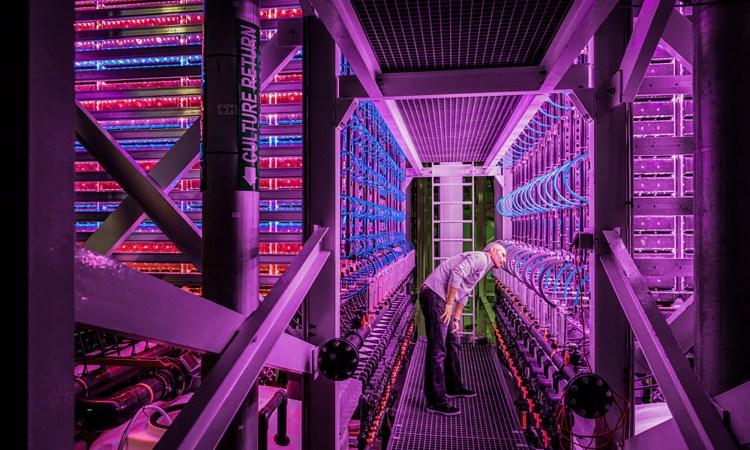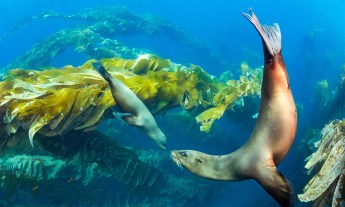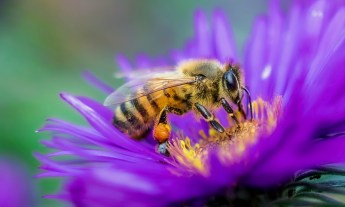
Feeding the world’s 7.9 billion people requires a lot of food. But as many of us know, climate change — in the form of droughts, floods and extreme temperatures — is threatening agriculture and our fragile food systems.
What’s more, the ongoing COVID-19 pandemic has exposed just how vulnerable we all are. As many as estimated 811 million people worldwide went hungry in 2020, and this number is projected to increase dramatically in 2021 amid ongoing supply disruptions, according to the World Bank.
Right now, “we risk venturing into a world of climate-driven food shortages, desertification, forced migration, species loss and other related catastrophic shocks,” says Asaf Tzachor, a researcher at the University of Cambridge Centre for the Study of Existential Risk. “If we are to avert a climate catastrophe, we must reduce our emissions of greenhouse gases, and decarbonization of food systems is a critical pathway towards such a future.”
So, how can we future-proof our diets while simultaneously reducing emissions? While growing unconventional foods — like insects, algae and larvae — in underground labs may sound like science fiction, it just might be the key to filling our plates and cupboards.
In a recent Nature Food report, Tzachor and his colleagues explain that growing these foods in controlled indoor farms powered by renewable energy could allow us to provide climate-resilient foods to everyone — including those most in need. “We have the ability to change the way that food systems operate, where highly nutritious foods could be grown at scale in dense urban settings, as well as in isolated communities,” he says.
Here’s a look at three risk-resilient foods that could represent the future of agriculture:
1. Microalgae and macroalgae
Most of us picture algae as the green film that floats on lakes or the sticky seaweed that clutters ocean coastlines.
But certain forms of microalgae and macroalgae are already in many household pantries. For example, you can find Chlorella Vulgaris sold as a liquid or powder dietary supplement in health food stores. This bright green microalgae — or microscopic algae that’s invisible to the naked eye — contains the nine essential amino acids that our bodies need to thrive so it’s considered a complete protein. (Fun fact: Chlorella Vulgaris even thrives outside of Earth! In 2019, NASA scientists began cultivating this microalgae aboard the International Space Center to feed astronauts and provide oxygen for long-term space exploration missions.)
Spirulina is another dietary supplement that’s made from a type of blue-green algae. Once consumed by ancient Aztec communities, spirulina has become popular thanks to its high nutritional value and relatively easy cultivation.
Macroalgae, which includes edible forms of seaweed like sugar kelp, is another promising option. While sugar kelp is already a popular staple in parts of Asia, new technology means it can easily be grown at scale in marine facilities located away from the coast.
In fact, researchers hope that cultivating micro- and macroalgae could even help us remove greenhouse gases from the atmosphere since they’re grown in closed facilities called photobioreactors (PBR), like the one in Iceland (pictured above). In a process similar to photosynthesis, PBRs absorb carbon dioxide from the atmosphere and turn it into food and energy by using sunlight. So engineers can use carbon capture technology to suck planet-warming CO2 directly out of the atmosphere and convert it — via PBRs — into food.
But if we really want to grow these foods in a sustainable way, we need to avoid using carbon-polluting energy sources to power these facilities, cautions Tzachor. “As long as the photobioreactors and the atmospheric carbon capture systems are connected to a renewable energy source, such as wind turbines, solar panels, hydroelectric, geoelectric or geothermal sources, then these future food systems are not only carbon neutral but actually carbon negative,” he adds.
2. Mycoprotein
Fungi come in all sorts of shapes and sizes — from portobello and shiitake mushrooms to truffles — but now you can add protein powder to the list. Mycoprotein is a form of single-cell protein that is derived from fungi. It’s naturally high in protein and fiber but low in saturated fat, and companies like Quorn are already producing meatless mycoprotein foods, such as frozen lasagna meals, fish sticks, nuggets and patties.
Like micro- and macroalgae, mycoprotein has a lot of potential as a powder supplement. We can “take a food item that we’re all very well familiar with, such as pancake powder, and then enrich it with mycoprotein,” Tzachor says. “This would improve the nutritional profile of traditional foods with essential micro- and macronutrients, where they can also act as antioxidant agents or anti-inflammatory agents.”
3. Insects and insect larvae
Insects are already making cameos on menus around the world. You can find silkworms in some Korean kitchens; crunchy locusts are considered a luxury in Japanese cuisine; and you can eat whole insects as a snack, similar to pine nuts, throughout South America.
Regardless of where you live, scientists predict that insects and insect larvae — such as mealworm beetles, house flies and black soldier flies — will become increasingly common components of our diets.
Not only would eating insects lessen our dependence on traditional agriculture — and preserve precious land and water — it could also reduce greenhouse gas emissions in unexpected ways. “We’re actually able to use organic waste to feed flies,” Tzachor says. By doing that, “you reduce methane emissions from the decomposition of organic waste [and] you reduce food waste.”
Still, incorporating insects into our diets will probably be met with some resistance. While Tzachor believes this is “fundamentally a cultural issue,” he doesn’t think it’s an insurmountable obstacle. Similar to microalgae and mycoprotein, insect larvae can be turned into powders and supplements, which could ease its transition into mainstream cuisine.
So what’s next?
If we want to increase production of these foods, we first need to address the technological challenge. Because the facilities to produce these foods use a lot of energy, “they may actually encourage greenhouse gas emissions,” Tzachor says. “But as long as production facilities are connected to a renewable energy source, then you circumvent that set of barriers.”
The other major obstacles are institutional and financial. Transforming the way that we produce and distribute food around the world requires substantial buy-in from governments, businesses and other international organizations, in addition to monetary support from private investors and the public sector.
However, Tzachor believes we can show stakeholders that investing in future foods would help us protect local economies. The modular design of future food systems means they could operate directly in the communities they serve and be run by locals. This could allow us to create decentralized and democratized food systems — unlike the large corporations that control so much of agriculture today — and generate green jobs while also nourishing the world’s growing population.
“The scientific community has been warning us for a very long time that anthropogenic climate change is happening, and overall we’ve done little about it,” Tzachor says. “Radical interventions in food systems have to be ecologically friendly, they have to be deployed in city centers, and you want them to be risk-resilient to a long list of potential hazards. That’s where future foods enter — they have such vast potential.”
We’re heading for a world population of 10 billion people — but what will we all eat? Lisa Dyson explains how an idea developed by NASA in the 1960s could be a key to reinventing how we grow food. Watch the full Talk:














